Abstract
The present paper deals with longitudinal and cross-sectional methods of counting cercariae shed from Biomphalaria alexandrina in Egypt, both experimentally and naturally infected with schistosomes. By the longitudinal method, the daily output of cercariae was counted from the first shedding from experimentally infected snails and from the day of collection from naturally infected ones. The results show that the size of the snails at the time of shedding exerts a very large effect on the output of cercariae and that the numbers obtained in the laboratory are not representative of cercarial output in the field. By the cross-sectional method, the cercarial output in the first 24 hours from infected snails collected in different months from the field was counted. The results show that output is size-specific. When the size-specific output is adjusted to the size-composition of infected snails taken from the field, it is estimated that the daily output from infected snails in the field may be 957.7 cercariae. However, this number may vary with the season.
Full text
PDF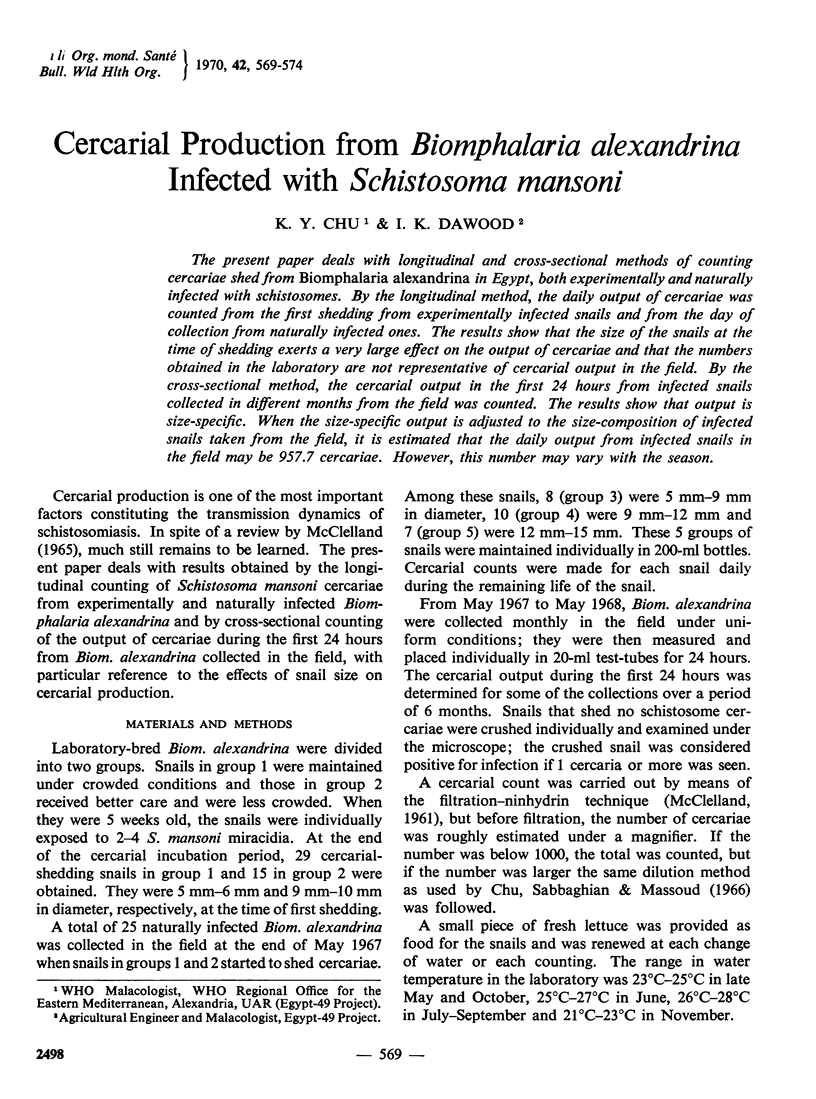
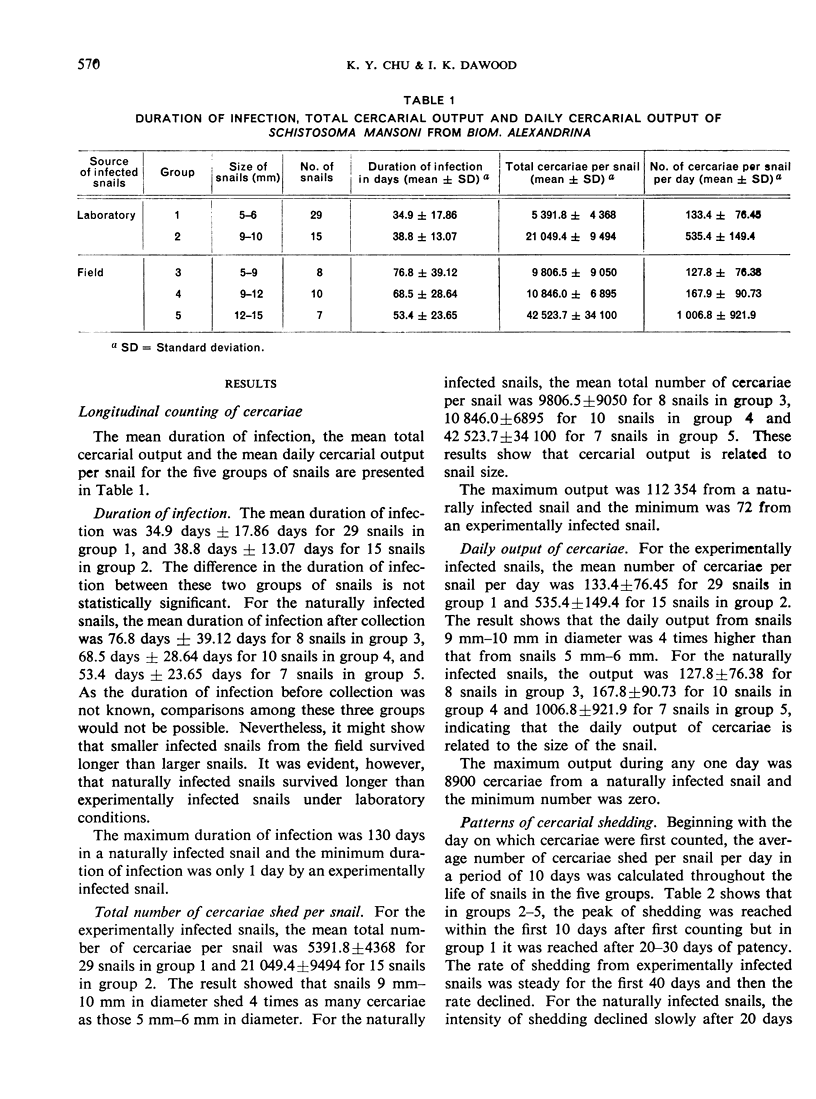
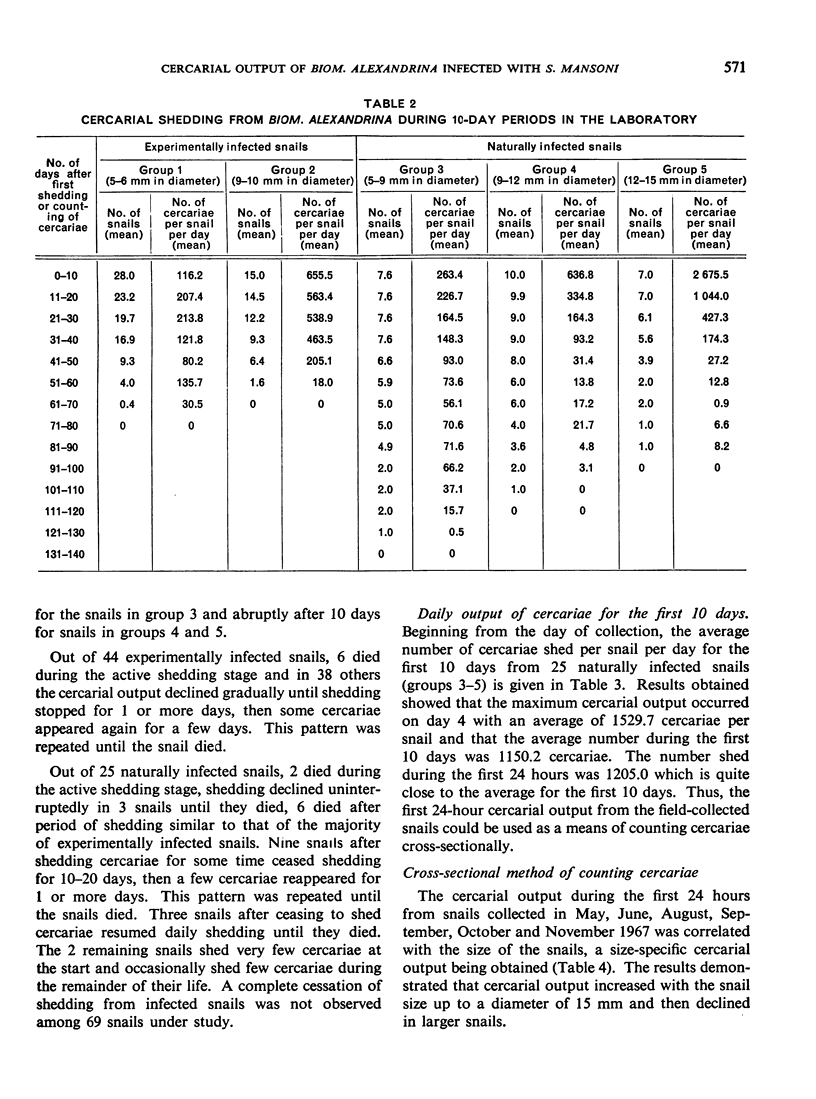
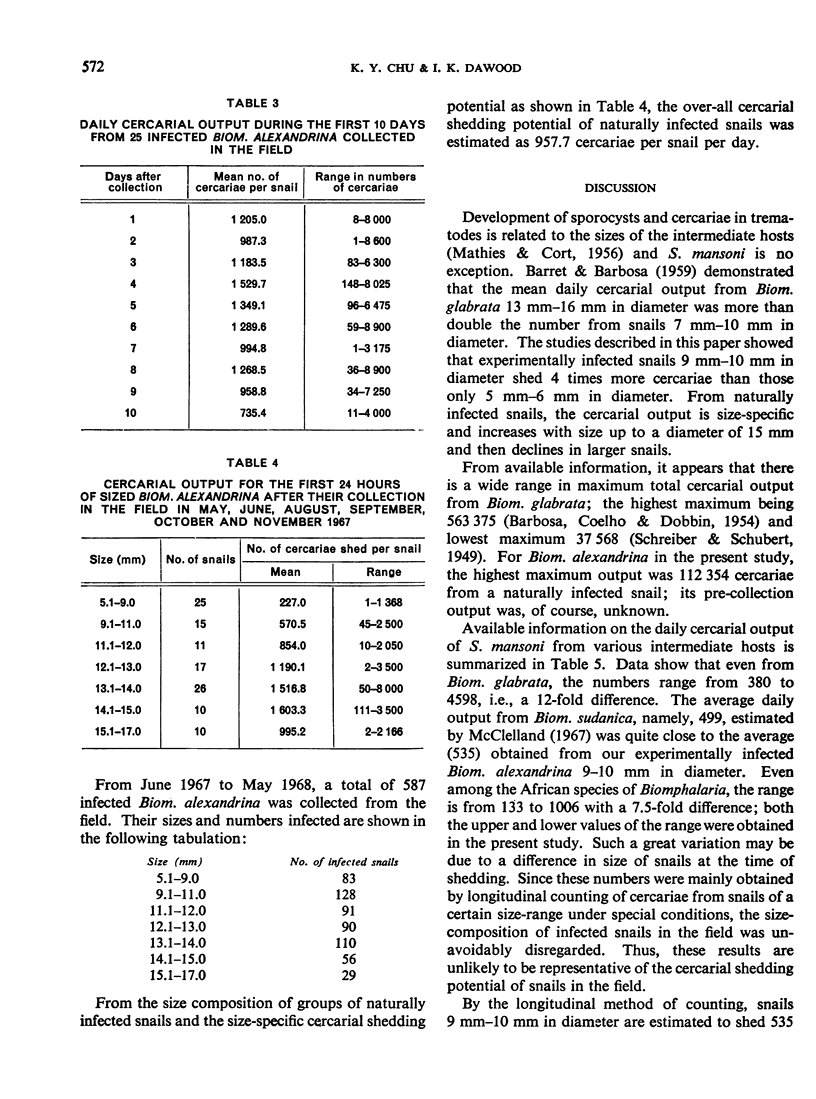
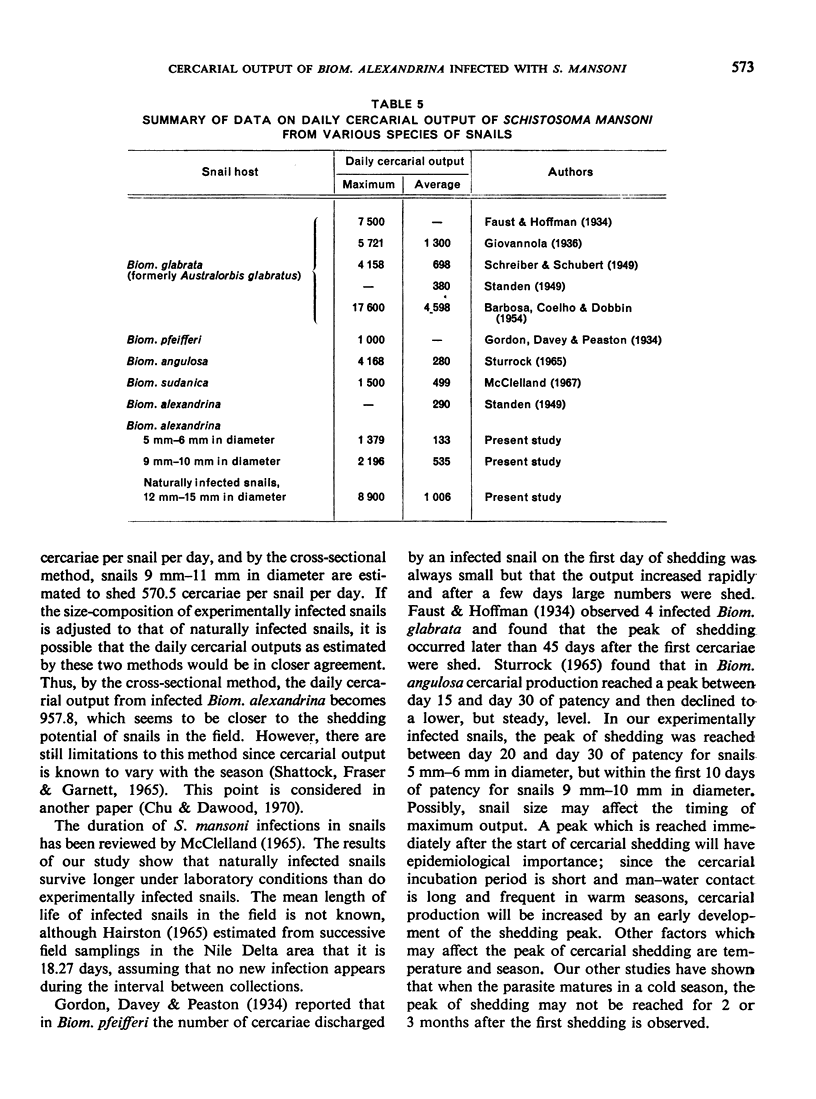
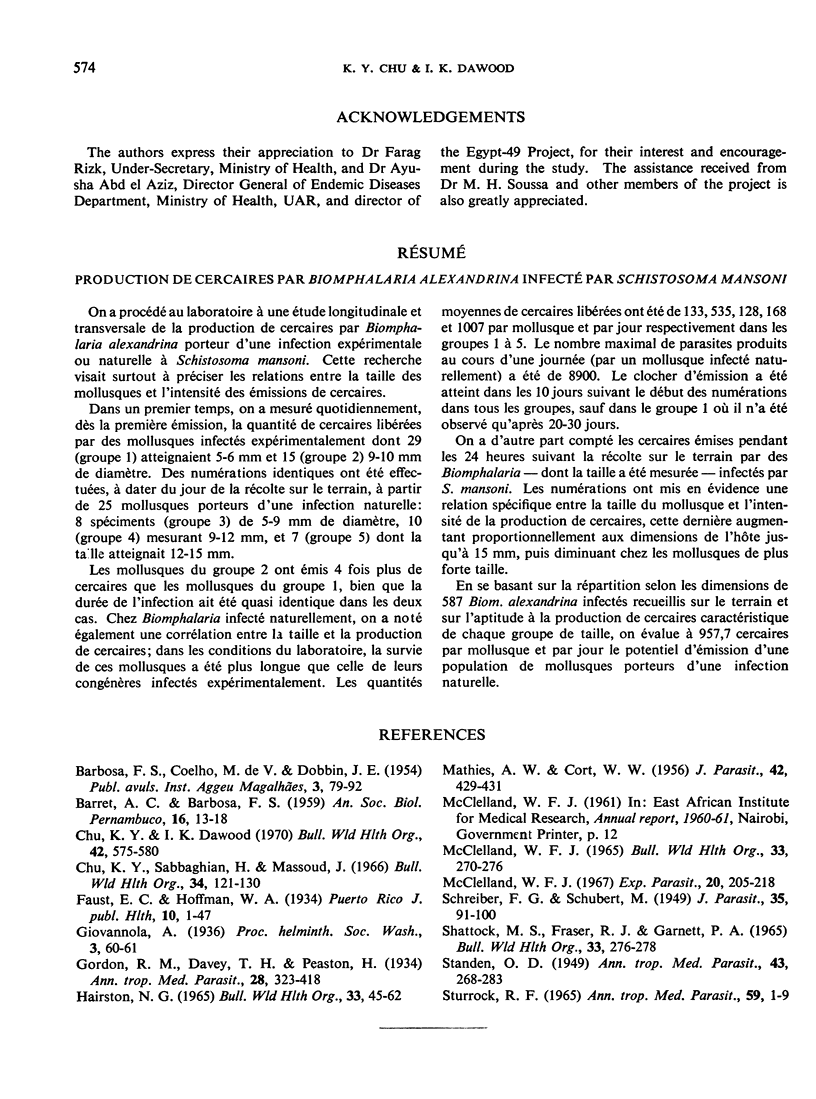
Selected References
These references are in PubMed. This may not be the complete list of references from this article.
- Chu K. Y., Dawood I. K. Cercarial transmission seasons of Schistosoma mansoni in the Nile Delta area. Bull World Health Organ. 1970;42(4):575–580. [PMC free article] [PubMed] [Google Scholar]
- Chu K. Y., Sabbaghian H., Massoud J. Host-parasite relationship of Bulinus truncatus and Schistosoma haematobium in Iran. 2. Effect of exposure dosage of miracidia on the biology of the snail host and the development of the parasites. Bull World Health Organ. 1966;34(1):121–130. [PMC free article] [PubMed] [Google Scholar]
- Hairston N. G. On the mathematical analysis of schistosome populations. Bull World Health Organ. 1965;33(1):45–62. [PMC free article] [PubMed] [Google Scholar]
- MATHIES A. W., Jr, CORT W. W. Larval trematode infections in snails of different sizes. J Parasitol. 1956 Aug;42(4 SECTION):429–431. [PubMed] [Google Scholar]
- McClelland W. F. Production of Schistosoma haematobium and Schistosoma mansoni cercariae in Tanzania. Exp Parasitol. 1967 Apr;20(2):205–218. doi: 10.1016/0014-4894(67)90040-9. [DOI] [PubMed] [Google Scholar]
- McClelland W. J. The production of cercariae by Schistosoma mansoni and S. haematobium and methods for estimating the numbers of cercariae in suspension. Bull World Health Organ. 1965;33(2):270–276. [PMC free article] [PubMed] [Google Scholar]
- SCHREIBER F. G., SCHUBERT M. Experimental infection of the snail Australorbis glabratus with the trematode Schistosoma mansoni and the production of cercariae. J Parasitol. 1949 Feb;35(1):91–100. [PubMed] [Google Scholar]
- STANDEN O. D. Experimental schistosomiasis; maintenance of Schistosoma mansoni in the laboratory, with some notes on experimental infection with S. haematobium. Ann Trop Med Parasitol. 1949 Dec;43(3-4):268–283. [PubMed] [Google Scholar]
- STURROCK R. F. STUDIES ON THE BIOLOGY OF BIOMPHALARIA ANGULOSA MANDAHL-BARTH AND ON ITS ABILITY TO ACT AS AN INTERMEDIATE HOST OF SCHISTOSOMA MANSONI. Ann Trop Med Parasitol. 1965 Mar;59:1–9. doi: 10.1080/00034983.1965.11686274. [DOI] [PubMed] [Google Scholar]
- Shattock M. S., Fraser R. J., Garnett P. A. Seasonal variations of cercarial output from Biomphalaria pfeifferi and Bulinus (physopsis) globosus in a natural habitat in Southern Rhodesia. Bull World Health Organ. 1965;33(2):276–278. [PMC free article] [PubMed] [Google Scholar]


